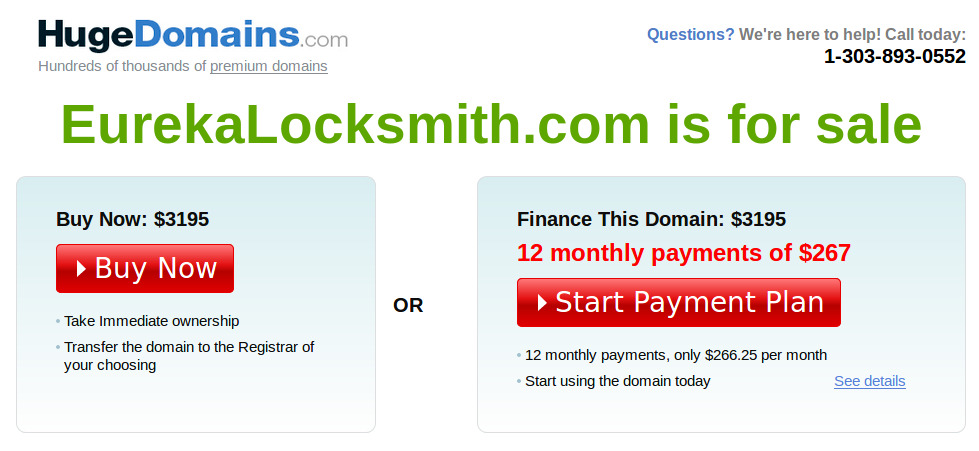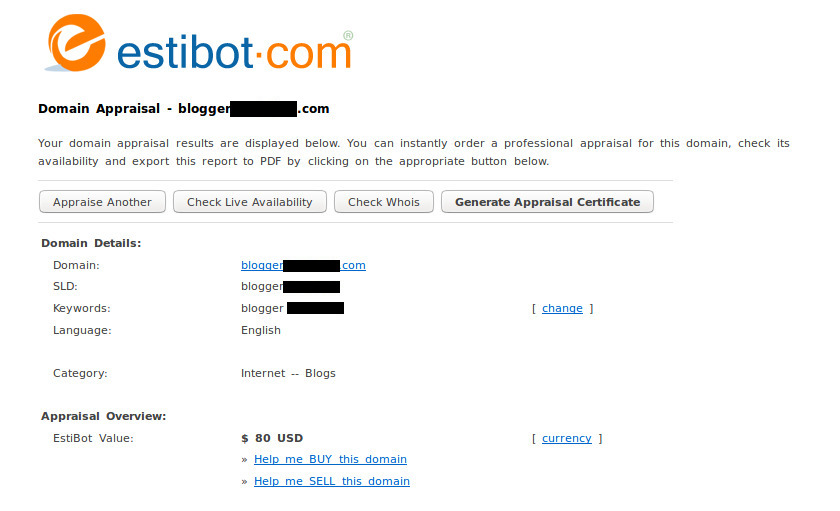Have you ever sold a domain for a premium? I recently did.
Though I have sold many websites over the years, it was my first domain sale. In this article, I would like to share my experience to help you get some insight into domaining as a source of online income.
Experiment with Domaining
Domaining is the trade of acquiring domains and selling them for a profit. Domainers acquire good domains through new registrations, purchase from existing owners, and also acquire expired domains.
I had experimented with domaining for a while a couple of years ago. Despite registering superb domains that were of direct interest to many businesses, I did not manage to sell any within the few months that I was working on this experiment with domaining. Without potential buyers, I had to let most of those domains to expire as the cost of holding on to the domains looked too high with no interested buyers in sight.
Many of the domains allowed to expire by me were picked up by HugeDomains, a domaining company that used automated systems to find and register domains for sale. HugeDomains registers lots of domains every day. The domains registered by them are put up for sale at fairly hefty prices, which does cover the risk of registering dud domains. Here is one of the domains that I let go after holding for just one year.

Despite leaving most domains, I did retain some of them with plans to develop them in future. One of the domains that I had registered about two years ago (2015-10-05) was a super two-word domain in the blogging niche. The keyword was Blogger, and it was perfect for a blogging tutorial website or service. I had found the domain among the list of expired domains, which I had been scouring regularly during my experiment with domaining. I considered the domain to be worth in excess of $1,000. Interestingly, Estibot, a domain valuation tool, appraised the domain to be under $100.

As the domain looked great and was potentially lucrative, I registered the domain immediately. Once I had the domain, I pointed it to the webhosting that I had set up to show a “Domain for Sale” web page with the contact details. I did not use any third-party service to park my domains. Instead, I set up a simple system to handle all of it on my own server.
Domaining: Game of Patience
Once I had registered some exciting domains, I tried approaching the potential buyers via cold email enquiries. Most of them did not elicit any response. The rare few responses offered a pittance for the price. So, nothing really materialized.
One lesson that I learned: you don’t get a premium if you approach the potential buyers. For a domain, or any other product, you can command a premium price only when the buyer approaches you with the intent of purchase. You can ask for the price you want, and get a good price even after bargaining. When buyers approach you, they already have a need for the product you are selling. You don’t have to push your sale. A motivated buyer offers the best chance of a successful transaction.
I didn’t generate any interest for the first few months. Then I started getting occasional queries via the contact forms for the parked domains. All the domains that generated buyer queries were one-word or two-word generic domains.
I had also registered some non-English domains. Most of the one-word domains were in Hindi (one of the main languages of India). Some of the domains were random brandable non-dictionary words.
Most of the Indian queries were pretty useless as the offered price was too low. Even for English-word domains, the general price offered was pathetic. I almost lost hope.
Then after more months, I received a somewhat respectable price offer for my “Blogger” domain in January 2017. It was around $150 or so. A fairly small amount, but much better than $10-20 offered earlier. I made a counter offer with a price, which was $750. The query went dead.
After a couple of months, I received another offer for the same Blogger domain in the beginning of March 2017. The initial offer was $500. This looked much better, but I moved the conversation to Skype from email. This time I asked for $1,000 for the domain, and left the negotiation with $850 or so as the final price. The discussion came to a halt again.
I had not sold any of the domains so far, but I didn’t want to sell my good domain for cheap when it had obviously generated interest among buyers.
Within a day or two, after the Skype chat, I heard back from the first buyer. What?
It didn’t look like a coincidence, and it wasn’t. Some quick search of Whois data and other public information revealed that the second offer was also from the first buyer using a proxy buyer. It is a fairly common practice to use proxies if original deal negotiations do not work as you want.
Since she had responded to the original email thread where I had asked for $750, I quoted my new price, which was higher than the previous one. I stuck with my original asking price of $750 as final. The buyer finally agreed to pay $750, excluding any transaction cost. I received the payment via PayPal, and initiated the domain transfer. All was settled within a few days.
Yay! I managed to earn a net profit from my domaining experiment after the sale, though the time cost would have been higher.
Lessons from Domaining Experiment
With my short experiment with domaining, these are the main takeaways.
- Domaining is not just registering random domains, but selecting the right ones that will sell.
- Domaining requires money & patience. Stay invested in domains until you find the right buyer.
- Don’t accept the very first offer for a domain. Only sell when you get the right price.
- Know your buyer. It helps to judge the intent and the best offer to expect.
- Use domain coupons & hack (eg: registering as a new buyer) to cut costs.
I hope my experience with domaining will help you gain some insight into the world of domaining. If you have any query or suggestion, please don’t hesitate to drop me an email. I would also love to hear your experience with domaining.

